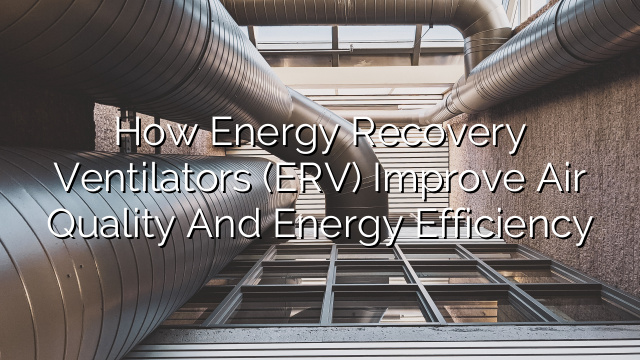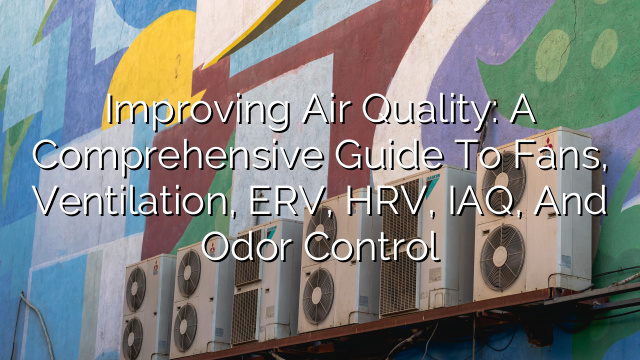Introduction
When it comes to choosing the right ventilation system for your home or office, there are many factors to consider. One important consideration is the duct diameter. The size of the ducts in your ventilation system can have a significant impact on its efficiency and effectiveness. In this article, we will discuss the importance of choosing the right duct diameter for your ventilation system, as well as provide some guidance on which diameter may be best for your specific needs.
Fans and Ventilation
Fans are an integral part of any ventilation system. They help to circulate air, remove stale or polluted air, and bring in fresh air from outside. In order to ensure that the fans are able to effectively perform their function, it is important to have the right size ducts.
The diameter of the ducts in a ventilation system determines the volume of air that can flow through them. If the ducts are too small, the fans will have to work harder to push air through, resulting in decreased efficiency and increased energy consumption. On the other hand, if the ducts are too large, the air may not flow as quickly as it should, leading to poor ventilation and potential issues with air quality.
Air Quality and Duct Diameter
One of the main purposes of a ventilation system is to improve air quality. Proper ventilation helps to remove pollutants, odors, and moisture from indoor spaces. The diameter of the ducts plays a crucial role in this process.
If the ducts are too small, the ventilation system may not be able to effectively remove pollutants from the air. This can lead to a build-up of allergens, irritants, and other harmful substances, which can have a negative impact on indoor air quality and the health of occupants.
Conversely, if the ducts are too large, the air may not be able to flow quickly enough to effectively remove pollutants. This can result in poor air quality, as well as issues with condensation and moisture build-up in the ducts, which can lead to mold growth and other problems.
ERV and HRV Systems
Energy recovery ventilation (ERV) and heat recovery ventilation (HRV) systems are commonly used in residential and commercial buildings to improve indoor air quality and energy efficiency. These systems work by exchanging stale indoor air with fresh outdoor air, while also recovering energy from the exhaust air to pre-condition the incoming air.
For ERV and HRV systems, it is important to choose the right duct diameter to ensure optimal performance. The ducts should be sized to allow for a sufficient flow of air, while also minimizing pressure losses and ensuring efficient heat exchange.
The Right Duct Diameter
So, how do you determine the right duct diameter for your ventilation system? The answer depends on a few factors, including the size of the space being ventilated, the required air flow rate, and the type of ventilation system being used.
As a general rule of thumb, larger spaces will require larger ducts to accommodate the necessary air flow. However, it is also important to consider the specific needs of your space. For example, if you are ventilating a kitchen or bathroom, which are typically high-moisture areas, you may need larger diameter ducts to accommodate the increased air flow required to remove moisture effectively.
In addition, the type of ventilation system being used will also impact duct diameter requirements. For example, a central air system may require larger ducts than a localized exhaust fan, as it needs to distribute air to multiple rooms.
The following general guidelines can be used to determine the appropriate duct diameter for your ventilation system:
- For residential applications, 5″ or 6″ diameter ducts are commonly used. These sizes are suitable for most single-family homes and small commercial spaces.
- For larger residential homes or commercial buildings, 8″ diameter ducts may be necessary to accommodate the required air flow.
- If you are unsure about the appropriate duct diameter for your specific needs, it is always recommended to consult with a professional HVAC technician.
Conclusion
Choosing the right duct diameter for your ventilation system is essential for optimal performance and energy efficiency. The size of the ducts impacts air flow, air quality, and overall system efficiency. By considering the size of the space, required air flow rate, and type of ventilation system, you can determine the appropriate duct diameter for your needs. If you are unsure, consult with an HVAC professional to ensure the best possible results.
FAQs
Q: Why is duct diameter important for a ventilation system?
A: The duct diameter impacts the air flow and performance of the ventilation system. If the ducts are too small, the system will have to work harder to push air through, leading to decreased efficiency and increased energy consumption. If the ducts are too large, the air may not flow quickly enough to effectively remove pollutants, resulting in poor air quality.
Q: How do I determine the right duct diameter for my ventilation system?
A: The right duct diameter depends on factors such as the size of the space being ventilated, the required air flow rate, and the type of ventilation system. As a general guideline, 5″ or 6″ ducts are commonly used for residential applications, while 8″ ducts may be necessary for larger homes or commercial buildings. Consulting with an HVAC professional can help you determine the appropriate duct diameter for your specific needs.
Q: Do I need to consider the type of ventilation system when determining the duct diameter?
A: Yes. The type of ventilation system being used will impact the duct diameter requirements. For example, a central air system may require larger ducts than a localized exhaust fan, as it needs to distribute air to multiple rooms. Consider the specific needs of your space and consult with a professional to ensure the right duct diameter.
Q: Can I install a ventilation system without considering the duct diameter?
A: It is not recommended to install a ventilation system without considering the duct diameter. The duct diameter impacts the performance, energy efficiency, and air quality of the system. Choosing the right duct diameter is essential for optimal results.














